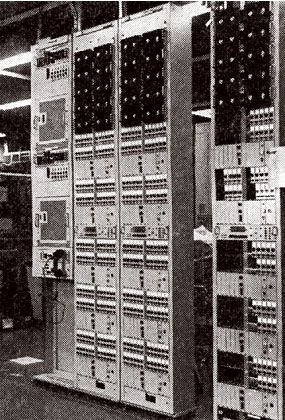存檔內容
注意:這是一個存檔頁面,其內容可能已過時。
PCM-24 Digital Transmission Equipment (1966)
The challenge to digitalize telecommunications

For a long while after the telephone was invented, central telephone offices were connected using analog transmission lines, which transmit a sound's amplitude. One of the drawbacks of this system, however, is that it is highly sensitive to noise. Therefore, since the late 1950s, scientists had been researching a way to use a transmission equipment to transmit voices converted into digital signal. The method was known as Pulse Code Modulation (PCM).
In order to realize transmission equipment supporting PCM, lower power consumption is mandatory. Research on the technology accelerated as transistors, which were well suited to this requirement, became commercially viable. In 1966, Fujitsu delivered the PCM-24 Digital Carrier Equipment, which consumed half the power of previous devices, to NTT. Although "frequency-division multiplex" analog carrier equipment was predominate at the time, Fujitsu had introduced the world to the next-generation digital transmission equipment.
In the wake of the PCM-24, Fujitsu set out on developing various types of digital transmission equipment, such as the PCM-16M/100M/400M and the DM12/23/34/45, and contributed to the creation of long-distance telephone and data telecommunication networks. The technology would later be widely used in general consumer products as well, such as signal processing for CD-ROMs.